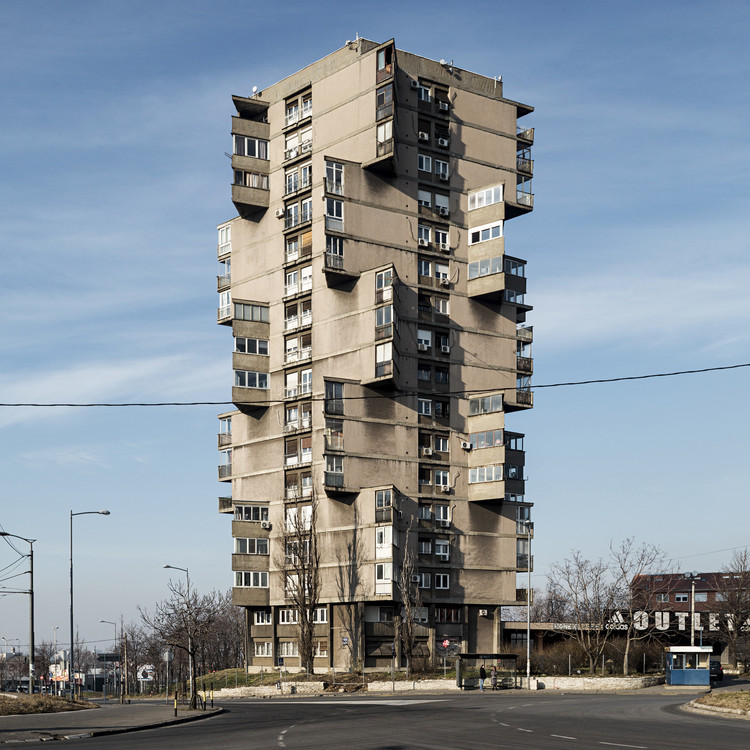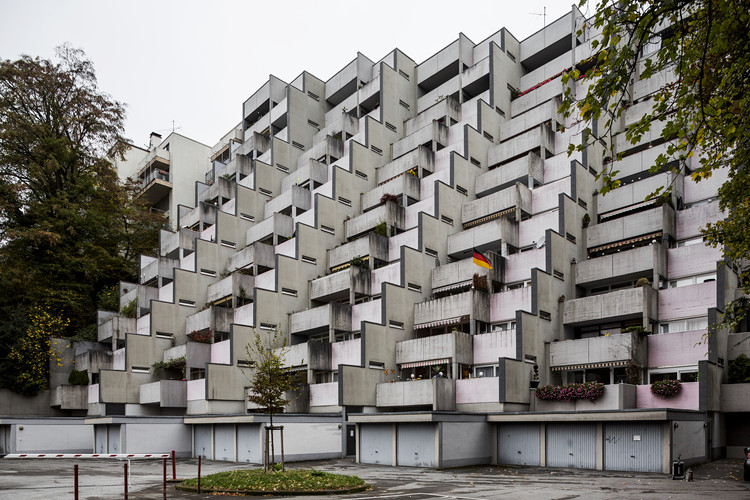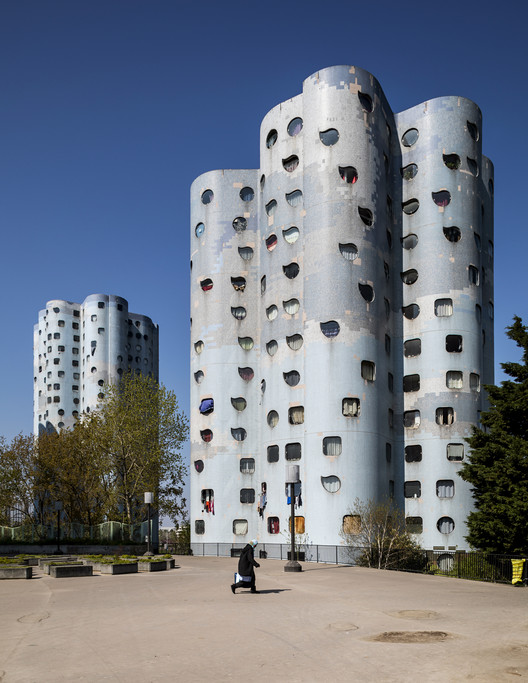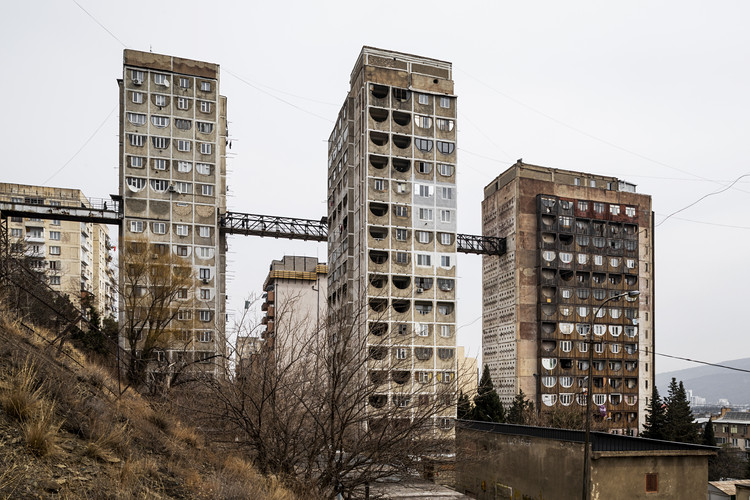
Although there is much conflict surrounding the term Brutalist, there are certain constants and patterns within the movement that offer a concrete idea of the movement and its place in contemporary architecture.
The buildings that adhere to Brutalism—an off-shoot of the Modern Movement that erupted between 1950 and 1970— stand out in part to their constructional sincerity- that is, keeping no secrets about the materials that went into their creation, their bold geometry, and the asperity of their textures and surfaces. Reinforced concrete is the predominant material in Brutalist works thanks to its prominent and dramatic texture, which is put on full display.
In his book, "The New Brutalism: Ethic or Aesthetic?," Reyner Banham establishes what, according to him, was the key factor in defining the semantic roots of the term Brutalism--"and that is Le Corbusier's La Unité d'habitation in Marseille, France.
If there is one single verbal formula that has made the concept of Brutalism admissible in most of the world's Western languages, it is what Le Corbusier himself described as 'Breton brut' (raw concrete). The term and the buildings it describes, emerge together."
Another definition that seeks to illustrate this style is the one offered by architects and urbanists Alison and Peter Smithson, as explained in Banham's book--"Brutalism seeks to be objective in the face of reality, society's cultural objectives, its demands, its techniques, etc. Brutalism confronts a society of mass production and elicits rough poetry from the confusing and powerful forces that it works within (...) Until now, Brutalism has been discussed on the basis of aesthetics, while its essence is a matter of ethics."
In an effort to trace Brutalism's mark on European architecture, photographer Stefano Perego has worked to document projects within the movement, namely collective housing projects, towers, buildings, and residential complexes.
In this article, we present 20 works from across Europe--Germany, Spain, Italy, France, Belgium, Serbia, and the United Kingdom--from the likes of architects Gérard Grandval, Émile Aillaud, Francisco Javier Sáenz de Oiza, Aldo Luigi Rizzo, Neave Brown, Leonardo Ricci, Renaat Braem, Mihajlo Mitrovic, Jean Renaudie, Renée Gailhoustet, the Chamberlin firm, Powell and Bon and, of course, Le Corbusier:
Unité d’Habitation in Berlin / Le Corbusier
- Year: 1957-1959
- Location: Berlin, Germany

Residential Building / Renaat Braem
- Year: 1960-1965
- Location: Antwerp, Belgium

Torres Blancas / Francisco Javier Sáenz de Oiza
- Year: 1961-1969
- Location: Madrid, Spain

"La Nave" Residential Building / Leonardo Ricci
- Year: 1962-1970
- Location: Florence, Italy

Residential Building / Leonardo Saviol
- Year: 1962-1970
- Location: Florence, Italy

Karaburma Housing Complex / Rista Sekerinski
- Year: 1963
- Location: Belgrade, Serbia

Residential Building, / Leonardo Savioli and Danilo Santi
- Year: 1964-1967
- Location: Florence, Italy

Barbican Estate Complex / Chamberlin, Powell and Bon
- Year: 1965-1976
- Location: London, United Kingdom

- Related article:
Utopia Photo Series Captures London’s Brutalist Architecture
Split Level House Complex / Atelier 40
- Year: 1966
- Location: Wuppertal, Germany

Les Choux de Créteil Buildings / Gérard Grandval
- Year: 1969-1974
- Location: Créteil, France

Housing Complex / Jean Renaudie and Renée Gailhoustet
- Year: 1969-1975
- Location: Ivry-sur-Seine, France

Rozzol Melara Complex / Carlo Celli, Luciano Celli, and Dario Tognon
- Year: 1969-1982
- Location: Trieste, Italy

Edificios Orpheus & Eurydice / Jürgen Freiherr von Gagern, Peter Ludwig, and Udo von der Mühlen
- Year: 1971-1973
- Location: Munich, Germany

Alexandra Road Estate / Neave Brown
- Year: 1972-1978
- Location: London, United Kingdom

Aillaud Towers / Émile Aillaud
- Year: 1973-1981.
- Location: Nanterre, France

Housing Complex / Otar Kalandarishvili and G. Potskhishvili
- Year: 1974-1976
- Location: Tiflis, Georgia

Genex Tower / Mihajlo Mitrović
- Year: 1977-1980
- Location: Belgrade, Serbia

Atlas Tower / Groupe EGAU
- Year: 1978
- Location: Liège, Belgium

Housing Complex "Pegli 3" / Aldo Luigi Rizzo
- Year: 1980-1989
- Location: Genoa, Italy

Residential Building in Paderno Dugnano
- Year: 1990
- Location: Milan, Italy

- Learn more about Stefano Perego and his work by visiting his website or his Instagram page.
- Check out more works of residential architecture and more articles and news on Brutalist Architecture.
Stefano Perego (1984) is a Milan-based architectural photographer, collaborating frequently with firms, architects, and artists. He is the co-author of SOVIET ASIA (Modern Soviet Architecture in Central Asia). His interest in architecture from the second half of the 20th century has led him to focus on Modernism, Brutalism, and Post-modernism.


















